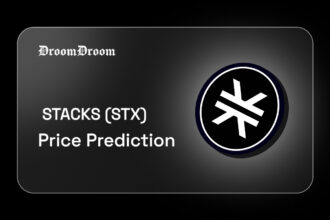Blockchain is a distributed ledger technology (DLT) that enables transactions among trusted users to track assets in a business network, validating and processing everything inside the blockchain system. It also makes it a preferable tool for financial transactions and other applications because it records transactions in a transparent and impenetrable manner as it also maintains security. It’s decentralized with an unchangeable character, however, it also makes it a desirable venue for illegal activity.
- What Is Blockchain Forensics?
- Importance Of Blockchain Forensics In Identifying Illicit Activities
- Techniques Used In Blockchain Forensics
- Network Analysis
- Machine Learning
- Clustering Of Addresses
- Transaction Graph Analysis
- Blockchain Explorer
- Identification Of Wallet
- How Does Blockchain Forensics Work?
- Tools Used In Blockchain Forensics
- What Is Asset Tracking On Blockchain?
- Benefits Of Asset Tracking In Supply Chain Management
- Improved Operational Efficiency
- Cost Savings
- Increased Accountability And Transparency
- Good Financial Management
- Risk Management And Compliance
- Improved Asset Consumption
- Techniques Used In Asset Tracking
- How Does Asset Tracking Work On Blockchain?
- Advantages Of Using Blockchain Asset Tracking
- Examples Of Blockchain-Based Asset Tracking Systems
- Conclusion
In 2022, it was reported by Hackhub report that the crypto ecosystem suffered a huge loss of more than $3.9 billion being swindled from DeFi Platforms due to the vulnerabilities of smart contracts, manipulation of price oracle and many more cyber-crime activities. While this year 2023, there was more than $656 million lost in the first half of the year, however, many efforts are being put in place to ensure that this yearly figure is within the previous one. Law enforcement agencies are focusing on implementing the methodologies to prevent crypto crime activities.
Blockchain forensics and asset tracking are essential tools for investigating criminal activities such as fraud, money laundering, and illicit transactions within the crypto industry and also records and monitors the movement of assets to improve accountability and transparency. Blockchain forensics and asset tracking are rapidly developing fields with many promising future developments. These developments could help increase transparency, reduce fraud and enhance security for various stakeholders in supply chains, financial systems and other industries.
As blockchain technologies are still evolving in the world of finance, it also leads to anonymity and pseudonymity which will attract cyber criminals engaging in illicit activities, such as wallet scams, fraud, hacking and many more. That is the reason why blockchain forensics and asset tracking come into play.
In this article, we will be dealing with how blockchain forensics and asset tracking work to identify and track illicit activities and what they are all about.
What Is Blockchain Forensics?
Blockchain forensics is a multidisciplinary or fast-growing field that involves applying forensics techniques to the analysis of blockchain technology and its associated data. In other words, it is a subset of digital forensics that uses blockchain data analysis to look into illegal transactions, fraud and other types of criminal conduct.
Blockchain, the distributed ledger technology of cryptocurrencies such as Bitcoin makes it a desirable tool for financial transactions and other applications due to its records of transactions in a transparent and inaccessible manner. Since it’s decentralized with an unchanged character, it can lead to illegal activities such as fraud, money laundering, cybercrime etc. As the use of blockchain technology continually evolves, the need for blockchain forensics analysis of this data has become increasingly important.
Importance Of Blockchain Forensics In Identifying Illicit Activities
The reason why it is so important to blockchain technology is that:
- Blockchain forensics is used to investigate fraudulent activities
- It enables investigators to discover evidence related to crimes such as fraud, money laundering, terrorist financing, drug trafficking and cybercrimes.
- With the use of advanced analytical tools and techniques to track and trace, analyze and identify any illicit transactions with suspicious behavior and anyone involved in cybercrime activities.
Techniques Used In Blockchain Forensics
Methods used in blockchain forensics can vary depending on the particular application and type of data used for evaluation due to being a complicated and fast-developing part. There are techniques used in blockchain forensics for analyzing blockchain data and here they are:
Network Analysis
Blockchain transactions take place inside a node’s network. While using network analysis tools, it will be possible to look into this network and spot any nodes that might be participating in illicit activity. Analyzing IP addresses, geolocation information and other network data may fall under this category.
Machine Learning
Using machine learning, it will be possible to examine huge sets of blockchain data and discover the trends that could be challenging to spot using more standard methods. Inconsistency that can point to illegal activity can be found by grouping addresses, and recognizing unusual transaction patterns and other criminal activities.
Clustering Of Addresses
Blockchain transactions are recorded using well-defined cryptographic addresses, which is known as clustering of addresses or address clustering. This is a method for finding out the linked addresses and transactions by analyzing these addresses. That helps investigators to locate people and groups engaging in criminal activity.
Transaction Graph Analysis
Each transaction on a blockchain is connected to one or more initial transactions that form a structure resembling a graph. Transaction graph analysis is a fundamental technique in blockchain forensics that analyzes the details of individual transactions; investigators can identify patterns of activity that might indicate criminal activity. For instance, investigators may look for large transactions that occur frequently or that might involve addresses that have been associated with criminal activity in the past.
Blockchain Explorer
This allows users to view the transaction’s details on a blockchain that can be a valuable resource for blockchain forensics, as it allows investigators to quickly and easily access information about transactions. Blockchain explorers typically provide information such as the transaction hash, the sender and recipient addresses, the amount of money transferred, and the transaction’s timestamp. The most popular blockchain explorer is Blockchain.com and Blockstream.info
Identification Of Wallet
This technique plays a major role in linking wallet addresses to individuals or entities involved in criminal activities. By associating wallet addresses with known entities, investigators will gain insights into the movement of assets between wallets, expose suspicious behaviour and establish connections between different actors on the blockchain. This technique will help to identify and track illicit transactions and build up the overall effectiveness of blockchain forensic investigations.
How Does Blockchain Forensics Work?
The precise stage required in blockchain forensics can change depending on the specific application and the type of data examined. However, with a strict and organized plan, the investigators will have to learn the important details about the illicit activity on the blockchain and still contribute to the fight against cybercrime and financial crime. That is why we bring up this subtitle on how blockchain forensics works in dealing with this issue by following the steps below.
Gathering Of Data
This results in gathering all relevant blockchain data related to the inquiry. This may consist of block data, transaction data and other metadata.
Data Analysis
All the methods that include techniques used in blockchain forensics such as blockchain explorer, clustering of addresses, transaction graph analysis, data scraping, network analysis and others, are used to examine the data. These methods can be used to spot patterns and links between transactions and addresses while tracking down people and businesses engaging in illegal activity.
Results Visualization
Investigators and other stakeholders can without hesitation understand the outcomes of the data analysis, all thanks to the visualization. Charts, network diagrams and other visual representations fall under this category.
Evidence Presentation
The results of the analysis are introduced in such a way that is acceptable in the courtroom or other legal proceedings. This may require you to prepare reports, present evidence and provide the testimony of the expert.
Closure Of Investigation
After the investigation is over, the findings will be used to choose the best line of action. And that can result in going to court with stolen property recovery and taking other steps to prevent cybercrime and financial crime.
Tools Used In Blockchain Forensics
There are several blockchain analysis tools but we will mention the top five (5) application tools used in blockchain forensics along with their features available.
Elliptic
Elliptic is a blockchain analytic tool that helps in combating financial crime in crypto and blockchain. They cover at least more than 55o virtual assets across all blockchains and crypto assets. It empowers you to make faster, more accurate decisions so that you can reduce investigation times and tackle more crimes
Key features:
- Elliptic lens that provides you with information you need to safeguard your industries and your customers.
- With fraud, compliance and operational teams, they utilize lenses to expose crypto wallets that will provide you with visibility into who is behind each address as well as the money movement wallet.
Chainalysis
Chainalysis is a blockchain analytic tool that supplies banking sectors, crypto firms and government agencies with compliance and investigative tools. It comes with several tools for transaction tracking, risk analysis and visualization.
Key Features:
- Simple interface for analyzing and investigating transactions
- Chainalysis KYT (know your transaction) can detect risky bitcoin transactions from darknet markets, fraud and addresses being sanction
TRM Labs
TRM labs assist financial institutions in combating crypto money laundering, preventing fraud and remaining compliant.
Key Features:
- TRM Investigator, a user-friendly Bitcoin research tool
- Automatic route identification is used to visualize transactions and Bitcoin money flow.
- Transaction monitor that keeps an eye on blockchain wallet to avoid fraud.
- It also assigns risk ranking to transactions based on unusual patterns and behavior
Coinpath
Coinpath is a collection of blockchain money-tracking APIs based on a difficult mathematical algorithm that can do complex computations between blockchain addresses to demonstrate the money movement.
Key Features:
- To detect clusters, the flow of transactions, account balance and other factors, coinpath uses heuristics and machine learning.
- Multiple blockchain investigation and compliance solutions rely on coinpath APIs.
- The origin of money and destination, transaction amount and flow path can all be tracked.
Crystal Blockchain
Crystal blockchain is a blockchain analytic tool that works with the private and public sectors to trace illicit activities and expose their identities. They connect numerous exchanges and institutions with blockchain money flow APIs and other web-based features.
Key Features:
- Crystal Expert for small crypto enterprises that run on the cloud.
- Crystal Pro offers dedicated hosting for the banking sector and other significant financial organizations that want to improve their data security.
What Is Asset Tracking On Blockchain?
Asset tracking can be referred to as the process or batch of products around the supply chain ensuring that the products that will get to the customers are sealed, able to withstand and original. It depends on the type of products available, all products have either some kind of packaging or a body of their own which can be used for tracking it in every part of the supply chain.
However, on the blockchain, asset tracking is a process that involves recording and monitoring the asset’s movement on the blockchain to improve accountability and transparency. Blockchain provides support for businesses in the supply chain, cross-border payments, tracking the source of high-value goods and offering identity services.
Benefits Of Asset Tracking In Supply Chain Management
Improved Operational Efficiency
It ensures that all assets are accurately classified, maintained, and easy to locate. This reduces time spent searching for assets and reduces interruption in business operations.
Cost Savings
Asset tracking can lead to notable cost savings by avoiding unnecessary asset purchases, which reduces loss and theft and also optimizing maintenance schedules.
Increased Accountability And Transparency
Asset tracking systems record every asset movement and status change. This creates an audit line, ensuring accountability and transparency in asset handling within the organization.
Good Financial Management
This system records major financial data such as asset cost, depreciation, and maintenance expenses. This data can be leveraged to improve budgeting, financial forecasting and asset-related decision-making.
Risk Management And Compliance
Asset tracking is implemented in regulatory compliance by maintaining accurate asset records. It also reduces risks associated with asset loss and theft.
Improved Asset Consumption
With all the assets’ status and their location, businesses can ensure that they are perfectly utilized, improving efficiency and reducing unnecessary asset expenditure.
However, asset tracking not only optimizes business operations but also acts as a strategic shift, enhancing general business performance and providing a competitive lead in the marketplace.
Techniques Used In Asset Tracking
The techniques used in asset tracking are based on the kind of technology employed or the type of asset being tracked. So, we will be exploring some of the techniques used below:
Barcode Tracking
Some assets have a barcode tag attached and you can find a lot of different applications online with scanning software which can help you to manage these items and have a recent record of all of them right from a mobile device. Since it’s electronic, it is accessible to all the employees who need it. Asset tracking software is especially useful if you have multiple offices or employees who have to work off-site.
Radio Frequency Identification (RFID)
RFID tags send out the location of your assets. This is a good method for ensuring that there are no mistakes in your asset tracking. These do require handheld scanners, so it is very necessary to decide how many of these you will need to get started.
Global Positioning System
Asset tracking software that uses a GPS tracking device can transmit through satellites. The main purpose of this system is that it can communicate across distances and keep accurate and recent records for everyone to use. There are mobile GPS asset tracking devices and they can also be hardwired into a large piece of equipment. You’ll also be able to set alerts in a geofence so you can keep track of your larger items. You will be notified immediately when you are out of reach where GPS is not supposed to be.
How Does Asset Tracking Work On Blockchain?
To explain how asset tracking works on blockchain, we will use Bitcoin as an example. Here are the following steps below:
Registration Of Bitcoin
When you register on Bitcoin, you will be assigned a unique identifier known as a transaction ID (TxID), which is recorded on the blockchain. Bitcoin can be followed when travelling across the blockchain network using this identity.
Transfer Of Bitcoin
The blockchain keeps track of all Bitcoin transfers that take place among investors. As a result, a permanent record of the ownership and history of transactions of Bitcoin will be created. For instance, if User A sends 1 Bitcoin to User B, the transfer will be recorded on the blockchain and assigned a new transaction identification.
Verification And Validation
Before looking at the blockchain record, the legitimacy and ownership of a Bitcoin must be confirmed at every point of its path. By doing this, fraud will be reduced and double-spending and counterfeiting of Bitcoin will be prevented. For instance, from the second step above when User B receives the Bitcoin, they will check the blockchain transaction to make sure that the Bitcoin they received is genuine and yet to be spent.
Report And Analyze
Reporting and analyzing the movement of Bitcoin, such as the quantity of Bitcoin transferred or the total number of Bitcoin transactions will be generated using the record of the blockchain. This can assist companies in recognizing patterns and enhancing their financial procedures.
Advantages Of Using Blockchain Asset Tracking
Blockchain offers various advantages for asset tracking and they are:
Improved Efficiency, Security And Openness
The blockchain offers a secure ledger of every transaction, making it considerably more difficult for fraud to exist. Every transaction on the blockchain can be confirmed by several network nodes which will increase security and lower the possibility of fraud.
Improved Supply Chain Management
The blockchain also allows present asset tracking that can improve supply chain management which tracks the movement of raw materials, finances, goods and services and lowers the possibility of lost or stolen products.
Enhanced Cost Saving
It increases the effectiveness of financial procedures of asset monitoring on the blockchain. Due to blockchain-based asset monitoring that doesn’t require intermediaries such as banks or clearinghouses, transactions can be performed quickly and for less money. This can help businesses and industries to save time and money while also improving their cash flow.
Examples Of Blockchain-Based Asset Tracking Systems
Everledger
Everledger is the system that developed a blockchain to track the movement of goods from raw materials source to sales, tracking diamonds to ensure they don’t come from conflict zones. They are built on advanced technology and knowledge of strong industry is rooted in corporate citizenship principles.
IBM Food Trust
This is the solution system that was built to create a secure shared and agreement record of transactions. This enables outstanding visibility during each step of the food supply chain so that one can achieve new levels of trust and transparency ensuring food is safer, traceable and smarter from farm to fork.
Oracle Intelligent Track And Trace
This is a supply chain application technology that helps to direct the challenges of managing difficulties in a global network of trading platforms.
Arab Jordan Investment Bank(AJIB)
This is the system that uses blockchain to support their requirement for representation of fiat currency due to the immutable nature of recording on the blockchain, transfer submitted and received in near real-time.
“A digital twin is a digital representation of a real-world asset such as a bale of cotton– By Troy Norcoss”
Conclusion
Blockchain forensic and asset tracking work by analyzing the transactions and addresses on a blockchain to trace the circulation of funds and identify the parties involved allowing the detection and prevention of illicit activities. And tracking the asset’s movement, providing transparency and accountability in the global market.



















